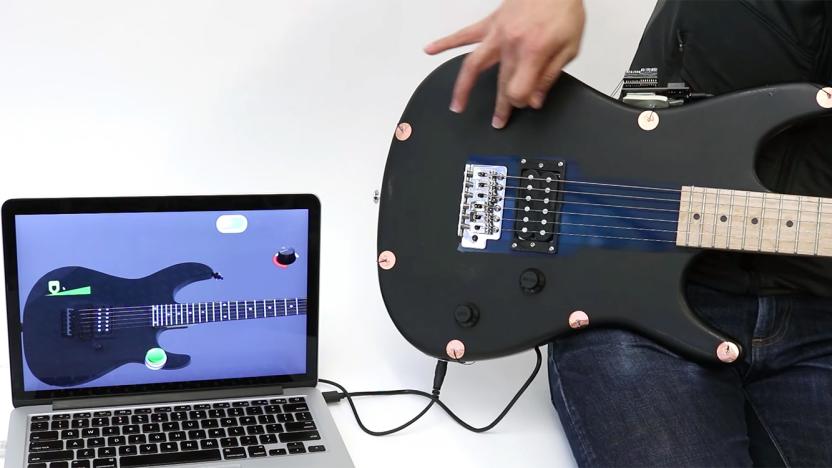qeexo
Latest

Get ready to 'spray' touch controls onto any surface
Nowadays we're accustomed to the slick glass touchscreens on our phones and tablets, but what if we could extend such luxury to other parts of our devices -- or to any surface, for that matter -- in a cheap and cheerful way? Well, apparently there's a solution on the way. At the ACM CHI conference this week, Carnegie Mellon University's Future Interfaces Group showed off its latest research project, dubbed Electrick, which enables low-cost touch sensing on pretty much any object with a conductive surface -- either it's made out of a conductive material (including plastics mixed with conductive particles) or has a conductive coating (such as a carbon conductive spray paint) applied over it. Better yet, this technique works on irregular surfaces as well.

Multitouch is about to get more advanced thanks to Qeexo
Multitouch input, as we know it, is mostly for scrolling, rotating plus zooming with two fingers, and you can use more to toggle various actions on supported trackpads. But if you ask Mountain View-based Qeexo, we've only scratched the surface of this technology. Over the past couple of years, this company had been working on a software solution dubbed TouchTools, which can let you bring up virtual tools such as a pen, an eraser, a camera, a tape measure, a ruler, a magnifying glass or even a mouse using intuitive multitouch gestures. Many of these resemble the way you'd hold the real thing which is where the challenge lies, yet TouchTools works on all existing hardware that use a standard multitouch screen controller, which should appeal to device manufacturers.

Qeexo's FingerSense lets touchscreens listen, makes any object an input device (video)
While the humble touchscreen has become the standard interface for most smartphones, and capacitive displays make it a painless experience, the folk at start-up Qeexo think things could still be improved. It's developed a technology called FingerSense that could add even more functionality. Essentially, by using a small acoustic sensor, it measures the vibrations as objects tap the screen, and can tell the difference between them. So, for example, a knuckle tap could be used for "right-click." The tech is able to spot the difference between materials, too, so even when no finger is involved, it can register input, a great assistance to those with longer fingernails. The fun doesn't stop there, though, with the demo video after the break showing a Galaxy SIII with a modified display, able to register stylus input, even without official support for it. More input options can never be a bad thing, and if nothing else, it could certainly make those GarageBand drumming sessions a little more interesting.

